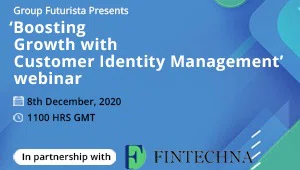The last few weeks have been busy within the Fintech community. The Wharton FinTech team alone attended four engaging conferences: Lendit Latam, MoneyNext Summit North America, FinTechTalents Open Finance, and NYT Dealbook Online Summit. My classmate Gabrielle Capoverde wrote about Open Banking in Latam as discussed in the Lendit conference, inspiring me to hone in on the open banking discussions during the others. Across conferences, I saw the dichotomy between the exciting potential of open banking and the slow development of its use cases. While the adoption of open banking and open finance may be slower than expected, the benefits are game-changing and worth fighting for.
Consider the Following Use Cases:
- Using data aggregation to revolutionize the credit scoring industry
- Determining the best retirement for you, based on current spending habits and savings across all platforms
- Evaluating health insurance products by cross-referencing family health history and price
These are the possibilities that have the fintech community stirring. Successfully developing these use cases requires an additional level of data sharing, but many in the industry believe we are headed towards this level of openness.
On the other hand, not all consumers share the community’s enthusiasm. And rightfully so. Who else watched Netflix’s Social Dilemma and thought twice about deleting their Instagram account? Thankfully, I believe that Open Banking has provided a blueprint that benefits consumers and maintains a necessary level of privacy.
A Brief View of Global Open Banking:
Open Banking started as a regulatory change in the UK, forcing banks to provide third-party financial services providers open access to consumer banking data (if account holders approve). This kick-started a change in banking in the UK and EU, which was both refreshing and daunting. In the US, the open banking revolution was more market-driven. In October of 2020, the Consumer Financial Protection Bureau announced it will provide proposed rules by the end of the year (in Europe PSD2 was enacted in January of 2018). Around the world, Hong Kong, Brazil, and Australia have also adopted a regulator-led approach, with Open API Frameworks and updated Consumer Data Rights (CDR). For a deep dive on the US vs. UK approach to Open Banking, check out Ryan Zauk’s interview with John Pitts, Head of Policy at Plaid (starting from 13:30).
What is Preventing Greater User Adoption:
In the US, it’s not very hard to see what is holding adoption back. During the MoneyNext Summit, Sofia Freyder of JP Morgan explained that with over 10,000 banks and credit unions in the United States, most with legacy operating systems and no government mandate to change, the evolution to Open Banking is bound to be slow. Susan French, Head of Product at BBVA Open Platform, and guest of the Wharton Fintech Podcast discussed how “economies that [have] less embedded infrastructure… [leapfroged] to newer technologies more quickly”. To drive adoption from incumbent players, regulators will need to provide clear guidance on what to expect next. To drive adoption from consumers, regulators will need to provide assurance that this new way of working is safe.
In the UK, the slow uptake is a bit harder to decipher. A MoneyNext panel on how consumers perceive Open Banking touched on the public distrust of the idea, partially generated by social media misinformation. Furthermore, the value of Open Banking has not been effectively communicated to most users; the conversation needs to focus on the rich array of services and ownership of individual finance that Open Banking will enable, while factually sharing the data aggregation required to do so. Hopefully, the continued transition towards Open Finance will make benefits for consumers too hard to ignore.
From Open Banking to Open Finance:
Open Finance refers to the expansion of Open Banking regulation in the UK to include other types of bank accounts and bank data. Many, including the regulators involved, believe that the additional use cases made possible by Open Finance will accelerate Open Banking adoption and help the industry reach its true potential. Like Open Banking, this a global shift, with some countries opting for a regulator driven approach, and others (mainly the US) opting for a market-driven approach. For a more detailed look at the implications of Open Finance, check out this joint report from 11:FS and Plaid.
What This Means for Data Privacy:
There is a tricky balance between assuring customers of their data privacy (and preventing backlash like the tech industry is seeing now) and maximizing innovation. Many I have talked to in the US say that global regulators have limited use cases of Open Banking by providing too strict guidelines, and Open Finance regulations have not gone far enough to change that. Many in the UK believe they are miles ahead of the US in terms of user adoption, and that eventually, everyone must move towards a central API standard.
I believe Australia has done a great job of finding this balance. They recognized how open data implications stemming from Open Banking will soon apply to other industries. Their CDR legislation starts by providing data sharing guidelines for banks, with the energy and telecommunications sectors up next. This kind of transparent, proactive approach provides customers ownership of their data and an assurance that their data is being protected. It also provides incumbents and startups with the ability to invest in new technologies and partnerships without fear of government pushback. Finally, it affords regulators the wiggle room to make improvements as the regulations continue to roll out. For more information on Australia’s legislation, see this Bain article.
Which Companies are Innovating in the Space Now:
Finally, I wanted to highlight a few of the companies at the MoneyNext and FinTechTalents conferences that are innovating in the Open Finance space:
- PensionBee is on a mission to give consumers complete control and clarity across their retirement accounts
- Lydia the premier peer-to-peer payments app in France which is expanding across financial services products
- Yapily, which uses a single API to act as a technology enabler, helping companies benefit from Open Banking regulation
- Moneyhub provides consumer and enterprise analytics information and real-time account-to-account payments
Conclusion:
The trend towards digitization and the obsession with seamless and timely services won’t slow down any time soon. Open Finance can provide significant upside for users, helping them take ownership of their personal finance with never-before-seen ease. To see these advantages, and mitigate the associated risks, US regulators need to walk a fine balance. They must get ahead of data protection rights and provide secure protocols for data sharing (potentially using Australia as a blueprint) without stifling innovation (like many believe the UK has). By iteratively rolling out data regulations by industry, regulators will have the ability to make improvements that benefit consumers and maintain the speed of adoption.










